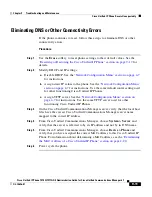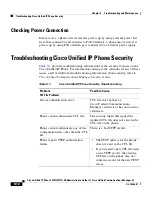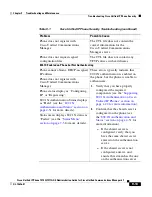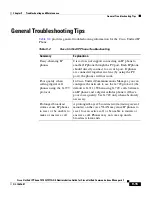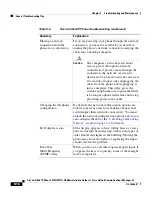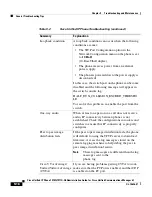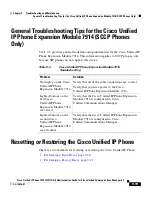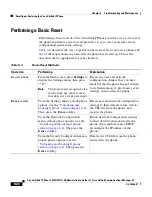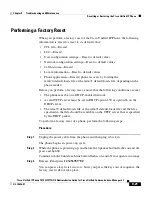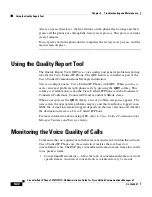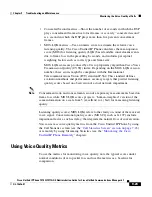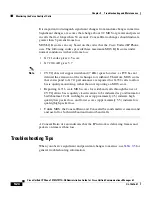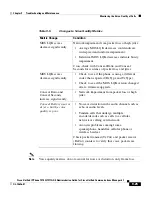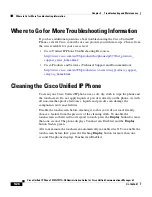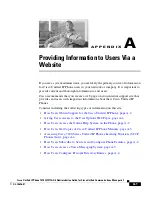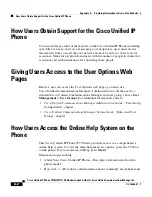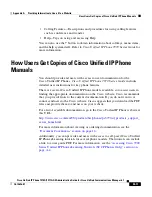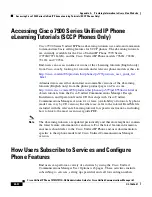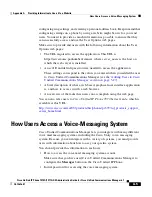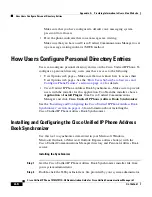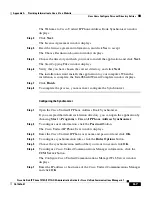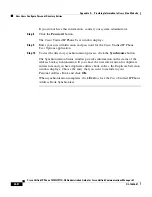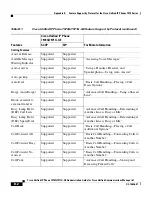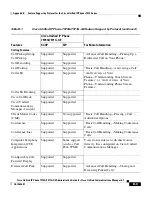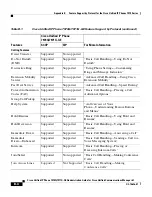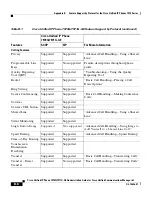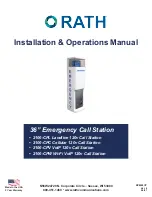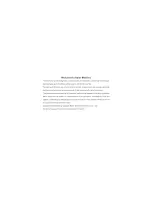
9-25
Cisco Unified IP Phone 7970G/7971G-GE Administration Guide for Cisco Unified Communications Manager 6.1
OL-14626-01
Chapter 9 Troubleshooting and Maintenance
Monitoring the Voice Quality of Calls
Note
Voice quality metrics do not account for noise or distortion, only frame loss.
Table 9-5
Changes to Voice Quality Metrics
Metric Change
Condition
MOS LQK scores
decrease significantly
Network impairment from packet loss or high jitter:
•
Average MOS LQK decreases could indicate
widespread and uniform impairment.
•
Individual MOS LQK decreases indicate bursty
impairment.
Cross-check with Conceal Ratio and Conceal
Seconds for evidence of packet loss and jitter.
MOS LQK scores
decrease significantly
•
Check to see if the phone is using a different
codec than expected (RxType and TxType).
•
Check to see if the MOS LQK version changed
after a firmware upgrade.
Conceal Ratio and
Conceal Seconds
increase significantly
•
Network impairment from packet loss or high
jitter.
Conceal Ratio is near or
at zero, but the voice
quality is poor.
•
Noise or distortion in the audio channel such as
echo or audio levels.
•
Tandem calls that undergo multiple
encode/decode such as calls to a cellular
network or calling card network.
•
Acoustic problems coming from a
speakerphone, handsfree cellular phone or
wireless headset.
Check packet transmit (TxCnt) and packet receive
(RxCnt) counters to verify that voice packets are
flowing.
Summary of Contents for 7970G - IP Phone VoIP
Page 4: ......

